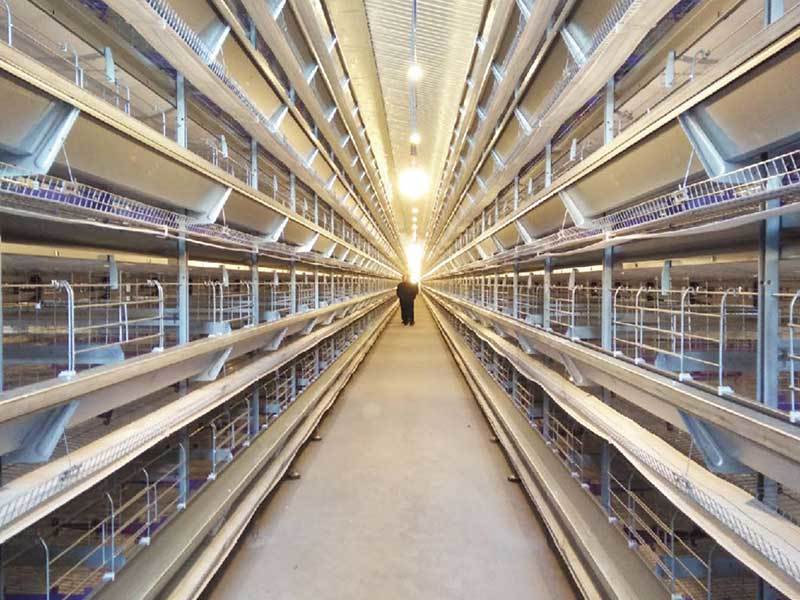Best Layer Pullet Chicken Cage Design for Farm Productivity
Introduction
Poultry farming is a vital sector of agriculture, contributing significantly to food security and economic growth. Among poultry farming practices, layer pullet chicken farming is particularly important for egg production. To maximize productivity, farmers must invest in high-quality chicken cage designs that promote bird health, efficient space utilization, and ease of management.
This article explores the best layer pullet chicken cage designs for farm productivity, focusing on key factors such as cage materials, dimensions, ventilation, feeding systems, and waste management. By optimizing these elements, farmers can enhance egg production, reduce mortality rates, and improve overall farm efficiency.
---
1. Importance of Proper Cage Design for Layer Pullets
Layer pullets (young hens before they start laying eggs) require a well-designed cage system to ensure proper growth and future egg-laying performance. A poorly designed cage can lead to stress, disease outbreaks, and reduced egg production. Key benefits of an optimal cage design include:
- Improved bird health and welfare – Reduces injuries, feather pecking, and cannibalism.
- Enhanced egg production – Proper space and comfort lead to higher laying rates.
- Efficient space utilization – Maximizes the number of birds per square meter without overcrowding.
- Ease of management – Simplifies feeding, watering, egg collection, and cleaning.
- Disease control – Proper ventilation and waste management reduce infection risks.
---
2. Key Features of an Ideal Layer Pullet Chicken Cage Design
2.1. Cage Material and Durability
The choice of material significantly impacts the cage’s longevity and hygiene. Common materials include:
- Galvanized steel wire mesh – Resistant to rust, durable, and easy to clean.
- Plastic-coated wire – Provides additional protection against corrosion and improves bird comfort.
- Stainless steel – Highly durable but more expensive; ideal for long-term use.
The wire gauge (thickness) should be strong enough to support the birds without bending (typically 12-14 gauge).
2.2. Cage Dimensions and Space Requirements
Proper space allocation is crucial for bird welfare and productivity. Recommended dimensions per bird:
- Floor space: 450-600 cm² per pullet (varies by breed).
- Height: At least 40-45 cm to allow birds to stand comfortably.
- Width: 30-40 cm per bird to prevent overcrowding.
Multi-tier designs (A-type or H-type) maximize vertical space, allowing more birds per square meter of floor area.
2.3. Ventilation and Airflow
Good ventilation prevents heat stress and respiratory diseases. Key considerations:
- Natural ventilation – Open-sided designs with mesh walls allow air circulation.
- Mechanical ventilation – Fans and exhaust systems for large-scale farms.
- Proper spacing between cages – Prevents ammonia buildup from waste.
2.4. Feeding and Watering Systems
Efficient feeding and watering systems reduce labor costs and ensure consistent nutrition:
- Trough feeders – Placed outside the cage to minimize feed wastage.
- Automatic nipple drinkers – Provide clean water and reduce spillage.
- Feed distribution systems – Conveyor belts or chain feeders for large farms.
2.5. Egg Collection System
Automated egg collection reduces labor and egg breakage:
- Roll-away nest boxes – Eggs roll onto a collection tray, keeping them clean.
- Belt systems – Transport eggs to a central collection point.
2.6. Waste Management
Proper waste handling prevents disease and odor:
- Manure belts – Remove droppings automatically.
- Sloped floors – Allow waste to slide into collection trays.
- Composting or biogas systems – Sustainable waste disposal methods.
---
3. Types of Layer Pullet Chicken Cage Systems
3.1. Battery Cages (Conventional Cages)
- Description: Small, stacked cages in multiple tiers.
- Advantages: High stocking density, easy management, and efficient egg collection.
- Disadvantages: Limited movement for birds, potential welfare concerns.
3.2. A-Type Cages
- Description: Angled cages forming an "A" shape, allowing manure to fall into a pit.
- Advantages: Good ventilation, easy waste removal.
- Disadvantages: Requires more vertical space.
3.3. H-Type Cages
- Description: Vertical stacking with central walkways for feeding and egg collection.
- Advantages: High capacity, automated systems.
- Disadvantages: Higher initial cost.
3.4. Free-Range with Enriched Cages
- Description: Larger cages with perches, nesting areas, and scratching space.
- Advantages: Better bird welfare, higher-quality eggs.
- Disadvantages: Lower stocking density, higher labor costs.
---
4. Best Practices for Optimizing Cage Design
4.1. Proper Lighting
- Use LED lights to simulate natural daylight (14-16 hours of light per day for layers).
- Adjust light intensity to reduce stress and encourage feeding.
4.2. Temperature Control
- Install cooling pads or misting systems in hot climates.
- Use heaters in cold regions to maintain optimal temperatures (18-24°C).
4.3. Biosecurity Measures
- Disinfect cages between batches.
- Limit human and equipment movement between cages to prevent disease spread.
4.4. Regular Maintenance
- Inspect cages for damage and repair broken wires.
- Clean feeders and drinkers daily to prevent contamination.
---
5. Conclusion
Choosing the best layer pullet chicken cage design is essential for maximizing farm productivity. Factors such as cage material, dimensions, ventilation, feeding systems, and waste management play a crucial role in ensuring bird health and efficient egg production.
Farmers should select a cage system that balances cost, bird welfare, and operational efficiency. Whether using battery cages, A-type, H-type, or enriched systems, proper management and maintenance are key to long-term success. By implementing these best practices, poultry farmers can achieve higher egg yields, lower mortality rates, and sustainable farm operations.
Investing in a well-designed Layer Pullet Cage system is not just about housing chickens—it’s about creating an environment where birds thrive, leading to better productivity and profitability.

 Catalogue
Catalogue








 Whatsapp
Whatsapp Телефон
Телефон
Шарҳ
(0)